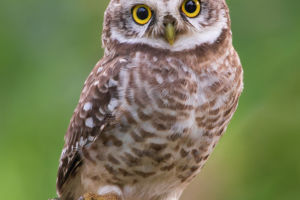Birds engage in various communication methods in the expansive skies and dense woodlands.
Their songs, postures, and feather colors serve as their means of conveying messages.
Yet, the question remains: can different species of birds truly engage in meaningful "conversations"? This inquiry has long intrigued humanity, spawning many intriguing studies and hypotheses.
Firstly, it's crucial to understand that avian communication transcends mere verbal exchanges; it involves a sophisticated network of signal transmissions encompassing sounds, visuals, and behaviors.
While birds utilize diverse communication strategies, each species retains its unique features, contributing to the complexity of inter-species interaction.
1. The Rich Tapestry of Avian Language:
The avian lexicon is a vibrant tapestry of diverse calls and sounds, each carrying nuanced meanings within their communities.
For instance, the raucous call of the blue magpie, familiar to many birdwatchers, often warns of impending danger. Conversely, the melodious song of the zebra-breasted chickadee may signify courtship or territorial assertion.
2. Imitation and Learning:
Notably, some avian species can mimic the calls of other birds and environmental sounds, broadening their communication repertoire.
Cuckoos exemplify this capacity, adeptly mimicking the vocalizations of fellow birds and even human-made sounds such as cell phone ringtones. Such mimicry affords them increased adaptability in interspecies communication.
3. Visual Signaling:
Avian communication extends beyond auditory cues to encompass visual signals, including plumage displays, postures, and coloration. Male peacocks, for instance, flaunt their resplendent tail feathers to attract potential mates, while predatory birds may flaunt their imposing stature through puffed-up plumage.
4. Migration and Collective Behavior:
Communication assumes heightened importance during migratory journeys and communal activities, where coordinated efforts are imperative for survival.
Flocking birds often synchronize their movements through specific gestures and calls, facilitating group cohesion and enhancing predator evasion and resource acquisition.
However, despite the sophistication of avian communication, the designation of their interactions as genuine "conversations" remains contentious.
Unlike human language, characterized by intricate symbol systems and abstract concepts, avian communication may rely more heavily on immediate contextual cues and instinctual drives.
Thus, while their communication displays complexity and sophistication, whether it parallels the abstractness and expressiveness of human language remains an enigma.
Nevertheless, ongoing research into avian behavior and cognition offers compelling insights into communication dynamics. As our understanding deepens, future investigations may unveil further revelations about the intricacies of bird communication, enriching our appreciation of their fascinating world.
In conclusion, avian communication represents a multifaceted domain characterized by diverse signaling modalities encompassing sound, vision, and behavior. While refraining from labeling it as conventional "conversation," the intricacies of avian communication warrant ongoing exploration and admiration.


